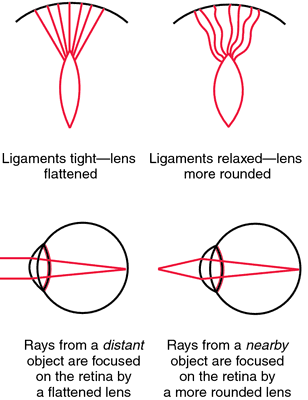Which of the following assessment findings should the nurse report to the practitioner? (Select all that apply)
Use of accessory muscles
Nail bed greater than 160 degrees
Circumoral cyanosis
Pursed lip breathing
Anteroposterior-to-transverse diameter of 1:1
Correct Answer : A,B,C,D,E
A. Use of accessory muscles
Explanation: Using accessory muscles during breathing indicates increased effort to breathe, which can be a sign of respiratory distress. It suggests that the client is having difficulty breathing and is using additional muscles to aid in the process. This finding should be reported to the practitioner for further evaluation.
B. Nail bed greater than 160 degrees
Explanation: A nail bed angle greater than 160 degrees, also known as clubbing, is an abnormal finding and can be associated with chronic respiratory or cardiovascular conditions. It may indicate insufficient oxygenation and should be reported to the practitioner for evaluation.
C. Circumoral cyanosis
Explanation: Circumoral cyanosis, which is a bluish discoloration around the mouth, indicates inadequate oxygenation. It can be a sign of respiratory or cardiac problems and should be reported to the practitioner for further assessment and intervention.
D. Pursed lip breathing
Explanation: Pursed lip breathing is a technique often used by individuals with respiratory difficulties to improve oxygen exchange. However, if it's observed in a person who does not normally use this technique, it could indicate respiratory distress and should be reported to the practitioner for evaluation.
E. Anteroposterior-to-transverse diameter of 1:1
Explanation: An anteroposterior-to-transverse diameter of 1:1 (also known as barrel chest) is an abnormal finding often associated with chronic obstructive pulmonary disease (COPD). It suggests overinflation of the lungs and can impair effective breathing. This finding should be reported to the practitioner for further evaluation.
Nursing Test Bank
Naxlex Comprehensive Predictor Exams
Related Questions
Correct Answer is A
Explanation
A. The best time to perform a BSE is 4 to 7 days after the first day of the menstrual period:
This statement is correct. Performing BSE a few days after the menstrual period ensures that the breasts are less likely to be swollen or tender, which can make it easier to detect any unusual changes.
B. If she suspects that she is pregnant, then the woman should not perform a BSE until her baby is born:
This statement is incorrect. Pregnant women can still perform breast self-examinations. In fact, it's important for pregnant women to be aware of any changes in their breasts.
C. The best time to perform BSE is in the middle of the menstrual cycle:
This statement is not as accurate as the first choice. While it's true that performing BSE a few days after the menstrual period can be easier due to reduced breast tenderness, it doesn't necessarily mean the middle of the menstrual cycle for every woman. The timing can vary based on an individual's menstrual cycle.
D. The woman needs to perform BSE only bimonthly unless she has fibrocystic breast tissue:
This statement is incorrect. Regular monthly breast self-examinations are recommended for all women, regardless of whether they have fibrocystic breast tissue or not. Detecting changes early is crucial for breast health.
Correct Answer is A
Explanation
A. The pupils constrict when the examiner's index finger slowly moves toward the client's nose.
This statement is correct. Visual accommodation is the process by which the eye's lens changes shape to focus on objects at varying distances. When an object moves closer to the eyes, the pupils constrict to adjust and focus on the near object, preventing double vision.
B. The client involuntarily blinks in the presence of bright light directed over the pupils during the eye exam.
This statement describes the pupillary light reflex, not visual accommodation. The pupillary light reflex is the response of the pupils to light exposure.
C. The client's peripheral vision becomes sharper when the examiner shines a light over the pupils.
This statement is not accurate. Peripheral vision sharpness is not related to visual accommodation. Visual accommodation mainly involves adjusting focus for objects at varying distances.
D. The pupils dilate when the examiner's index finger slowly moves toward the client's nose.
This statement is incorrect. Pupils should constrict, not dilate, when focusing on a near object (as in visual accommodation). Dilation occurs in low-light conditions or in response to sympathetic stimulation.

Whether you are a student looking to ace your exams or a practicing nurse seeking to enhance your expertise , our nursing education contents will empower you with the confidence and competence to make a difference in the lives of patients and become a respected leader in the healthcare field.
Visit Naxlex, invest in your future and unlock endless possibilities with our unparalleled nursing education contents today
Report Wrong Answer on the Current Question
Do you disagree with the answer? If yes, what is your expected answer? Explain.
Kindly be descriptive with the issue you are facing.
